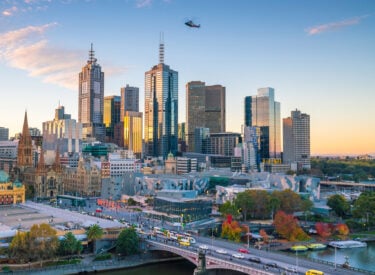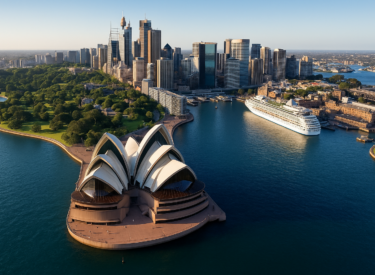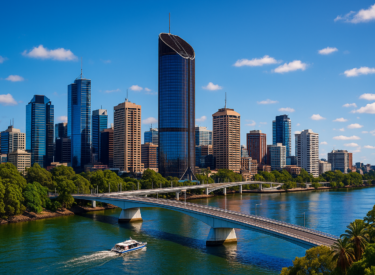
Key takeaways
Sydney has long been Australia's most expensive city, but the premium has now reached historic extremes. Melbourne's median house price is about 41% cheaper than Sydney's.
Sydney's geographic constraints limit housing supply and push land prices up, particularly in desirable areas near the coast or with water views. Taxes, charges and red tape account for 50% of the cost of building a new dwelling in Sydney.
Melbourne's underperformance during the pandemic was stark. As people left the city in droves, Melbourne saw the largest net loss of residents, which weighed on housing demand, and house prices didn't rise as sharply as in other cities.
Ms Creagh said that while Melbourne may continue to underperform in the short term, the gap between Sydney and Melbourne may begin to narrow in the coming years. She added that for those looking to enter the property market now, Melbourne may offer a rare window of opportunity.
Sydney has long held the crown as Australia’s most expensive city, consistently commanding a premium over Melbourne.
However, this premium has now reached historic extremes.
The latest PropTrack data reveals that the typical house in Sydney fetches a whopping 70% premium over its Melbourne counterpart.
Put simply, Melbourne's median house price is about 41% cheaper than Sydney’s, representing a more than $600,000 difference as of August 2024.

This is the largest gap we’ve seen in over 20 years.
Traditionally, the average price discount between the two cities hovered around 29% over the past decade.

So, why has Sydney always been pricier, and more importantly, what has driven this recent surge?
According to Eleanor Creagh, PropTrack's Senior Economist, Sydney's status as Australia’s most expensive city can be attributed to several key factors:
- Geographic constraints: Sydney’s geography plays a critical role in limiting housing supply. Hemmed in by its beautiful but constraining harbour, national parks, and the Blue Mountains, the available land for new developments is limited. This natural scarcity pushes land prices up, particularly in desirable areas near the coast or with water views.
- Global appeal: Sydney is not just an Australian city but a global one, with a strong international presence. Its economic fundamentals, iconic landmarks, and cosmopolitan appeal make it a magnet for both local and international buyers, which further drives up demand and, consequently, property prices.
- Higher building costs: It’s more expensive to build in Sydney. A recent report from The Centre for International Economics (CIE) found that taxes, charges, and red tape accounted for 50% of the cost of a new dwelling in Sydney, compared to just 37% in Melbourne. This adds to the overall cost of housing in Sydney.
- Limited supply, high demand: Sydney has historically faced lower housing completions per capita compared to Melbourne. Over the past decade, Victoria has built an average of 9.5 dwellings per 1,000 people each year, while New South Wales has only completed 7. This disparity has meant that Sydney's supply has struggled to keep up with its strong demand, further exacerbating its premium pricing.

The recent surge: what’s driving Melbourne’s relative cheapness?
While Sydney has surged ahead, Melbourne has underperformed.
This isn't just a post-pandemic phenomenon but part of a longer-term trend.
Melbourne has been the weakest-performing capital city since March 2020, a trend that has continued through 2024.
Ms Creagh explains:
"Melbourne’s underperformance during the pandemic was stark.
As people left the city in droves, Melbourne saw the largest net loss of residents, which weighed on housing demand.
As a result, house prices in Melbourne didn’t rise as sharply as in other cities.
And even after prices fell in 2022, the recovery has been slower, with values still sitting 4.7% below their peak in 2022."

More supply, softer demand
In contrast to Sydney’s constrained land supply, Melbourne’s urban sprawl has allowed for more extensive housing development, contributing to a larger stock on the market.
In fact, in July 2024, Melbourne saw its highest number of total listings since November 2018, with listings 24% above the five-year average.
This increase in stock is giving buyers more choices and exerting downward pressure on prices.
Ms Creagh also noted that Victoria’s tax policies have also made the state less attractive to investors.
Increases in land taxes, particularly on investment properties, have encouraged some investors to sell while dissuading new investments.
This has been another factor contributing to Melbourne’s weaker performance compared to Sydney.
Looking ahead: will the price gap narrow?
Ms Creagh said that while Melbourne may continue to underperform in the short term, history suggests that these swings are cyclical.
As Melbourne's house prices are currently at their lowest relative to Sydney in over a decade, we may eventually reach a point where Melbourne is viewed as undervalued.

She further said:
"If Victoria’s tax policies continue to deter investors, this could lead to lower levels of new building activity, particularly in the high-density segment, which relies heavily on pre-sales to investors to finance development.
This, combined with the rising cost of construction and strong population growth forecasts for Victoria, could eventually push prices higher and narrow the gap with Sydney.
At the same time, however, Sydney’s premium is unlikely to vanish entirely.
Its geographic constraints, global appeal, and limited housing supply will always make it a highly sought-after city, particularly in comparison to Melbourne’s more flexible and expansive urban landscape."
In conclusion, Sydney continues to command a significant premium over Melbourne, with the gap between the two cities reaching unprecedented levels, for now.
However, these cycles tend to correct themselves over time.
As Melbourne remains a more affordable and attractive option for buyers, particularly investors, we could see the price gap begin to narrow in the coming years.
But for those looking to enter the property market now, Melbourne may offer a rare window of opportunity, with prices at their most affordable relative to Sydney in two decades.














